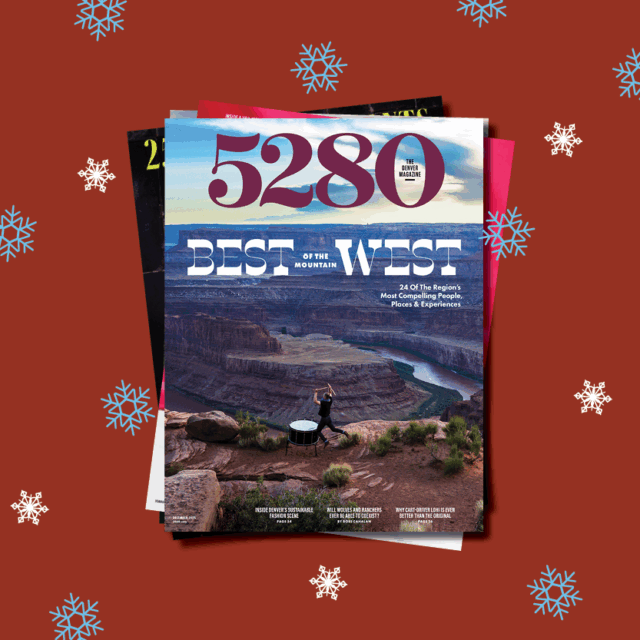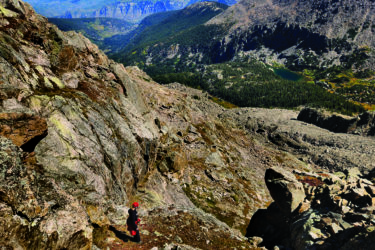The Local newsletter is your free, daily guide to life in Colorado. For locals, by locals.
1. Sturdy footwear
Hiking thirteeners can mean encountering a wide variety of trails. You could find yourself on strollable single-track (where good sneakers will do the trick) or you might rendezvous with a more technical rocky scramble (where you’ll want shoes with stickier rubber and a stiffer sole). Short story: Make sure you wear shoes that match your intended trail.
2. Navigation tools
Your cell phone with a mapping app might save your butt in the 21st century, but for off-trail hikes—which thirteeners are known to have—bring a topo map and compass and know how to use them.

3. Water
Carry half a liter of water for every hour you plan to be out—more on hot days. It’s not a bad idea to bring a small water filter or emergency purification tablets, as well, just in case you’re out longer than expected.
4. Food
Load up on the calories. You’ll probably eat more during a day of hiking than you would at home, so bring plenty of high-calorie, light-weight options.
5. Extra clothing
Dress in layers so you can more easily adjust as the temperature changes from the trailhead to the summit. Avoid cotton in favor of synthetics or wool, which wick away your body’s moisture and keep you warm even if you get wet. Always carry something waterproof: Especially in Colorado, afternoon storms in the summertime are commonplace.
6. Safety items
In case you get lost, having just enough equipment to light a fire (waterproof matches and cottonballs soaked in Vaseline), signal for help (a mirror, a brightly colored tarp, a whistle), and see in the dark (hello, headlamp!) can make the difference between life and death. Extras like an emergency shelter or blanket, satellite communicator, and water purification fall into the better-safe-than-sorry bucket, especially on more remote hikes like thirteeners.
7. First-aid kit
You should have a well-outfitted but reasonably sized kit. However, all the supplies in the world won’t be any good if you don’t know how to use them. Take a wilderness first-aid course to know how to solve common injuries in the backcountry.
8. Knife or multitool
These things come in handy more often than you realize. Bring a good one that can help you repair gear, cut rope, or, in an emergency, help you fashion tools to hunt for food.
9. Sun protection
In high elevations, the sun is exceptionally strong and there’s not going to be much to shade you from it above treeline. Wear a hat, bring sunglasses, and use lots of sunscreen. Consider a light sun “hoody” instead of a T-shirt, which will cover your arms and has a head cover to keep the sun from hitting your neck.
10. Shelter
Especially on thirteeners where you might be more likely to get lost and spend a night out, some type of shelter could be the item that gets you through an unintended overnight. A light tent or tarp might seem like overkill but neither take up much room in your pack. It’s worth the extra poundage; just do it.








